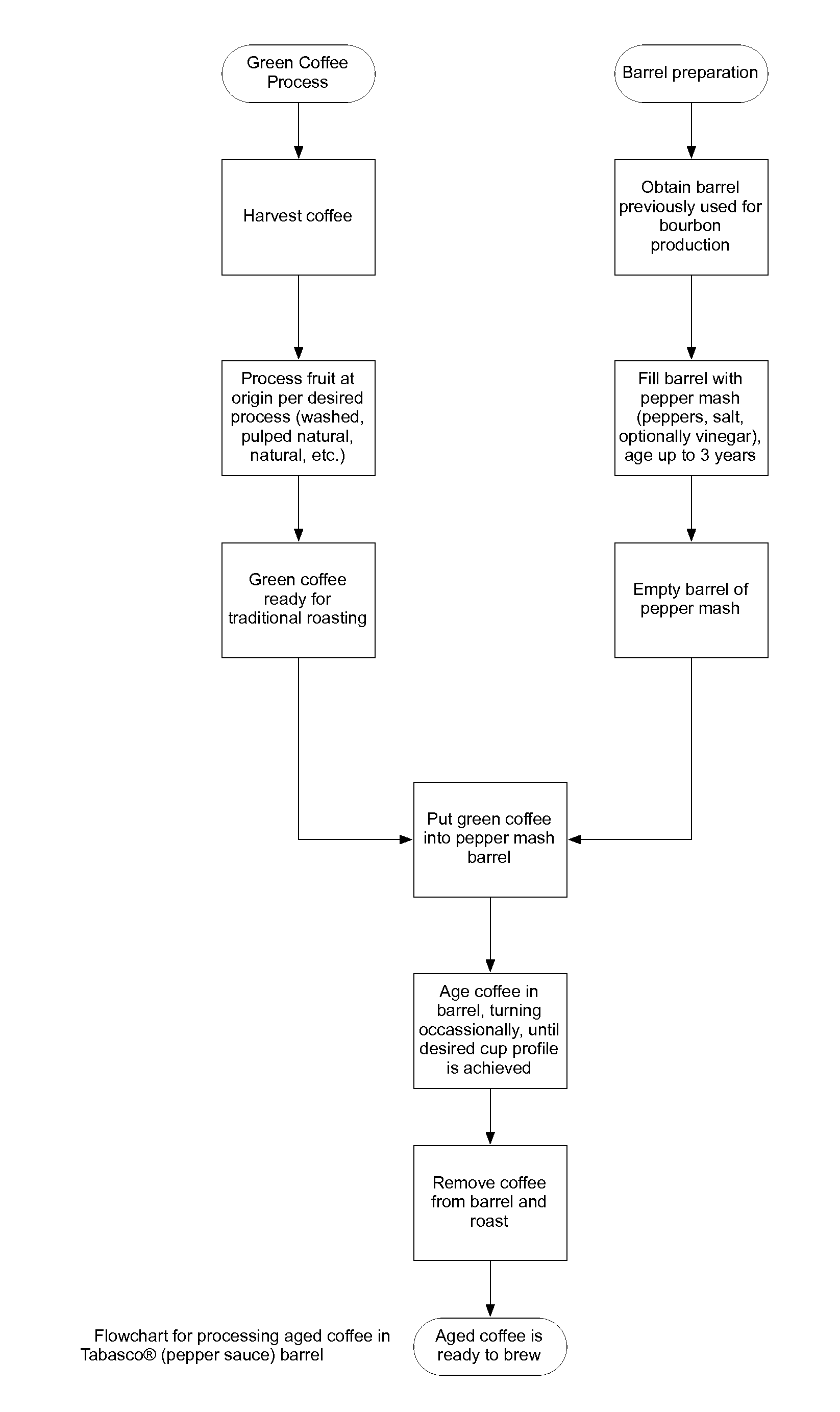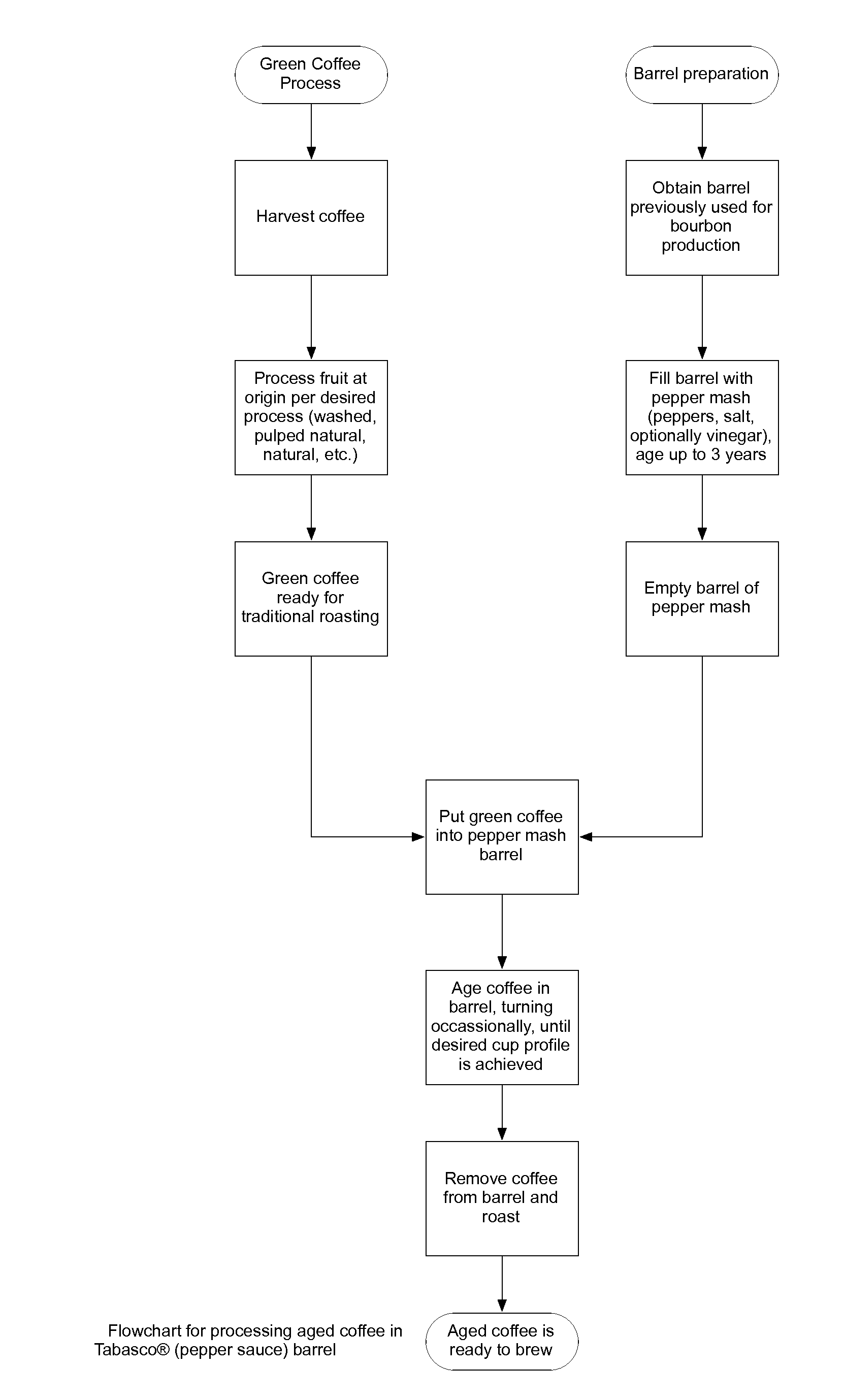Method for aging coffee
a technology for aging coffee and coffee beans, which is applied in the field of aging of coffee beans, can solve the problems of shortening the market for aged coffee, requiring many months or even years of processing time for aging coffee via these methods, and coffees are susceptible to spoilage, so as to speed up the process, improve the acidity of finished products, and accelerate the aging process
- Summary
- Abstract
- Description
- Claims
- Application Information
AI Technical Summary
Benefits of technology
Problems solved by technology
Method used
Image
Examples
Embodiment Construction
[0017]The cask, or barrel, used for coffee aging in this disclosure is a wooden cask, or barrel, that would be typically seen in the production of wine or whiskey. The casks are preferably made from oak wood, but other woods such as maple, chestnut, redwood, cedar, mesquite, or any other wood suitable for contact with food products may be used to produce different flavor characteristics.
[0018]During construction, the cask is preferably toasted or charred. This process results in an interior surface char, but does not negatively impact the structural integrity of the barrel. While the present invention preferably contemplates using charred barrels, un-charred barrels are also an option, which produce different flavor characteristics.
[0019]A new, previously unused, charred, cask is initially prepared by using said cask in the production of wine or spirituous liquor, preferably the spirituous liquor known as bourbon whiskey. Other spirituous liquors are also aged in barrels, such as sc...
PUM
 Login to View More
Login to View More Abstract
Description
Claims
Application Information
 Login to View More
Login to View More - R&D
- Intellectual Property
- Life Sciences
- Materials
- Tech Scout
- Unparalleled Data Quality
- Higher Quality Content
- 60% Fewer Hallucinations
Browse by: Latest US Patents, China's latest patents, Technical Efficacy Thesaurus, Application Domain, Technology Topic, Popular Technical Reports.
© 2025 PatSnap. All rights reserved.Legal|Privacy policy|Modern Slavery Act Transparency Statement|Sitemap|About US| Contact US: help@patsnap.com


